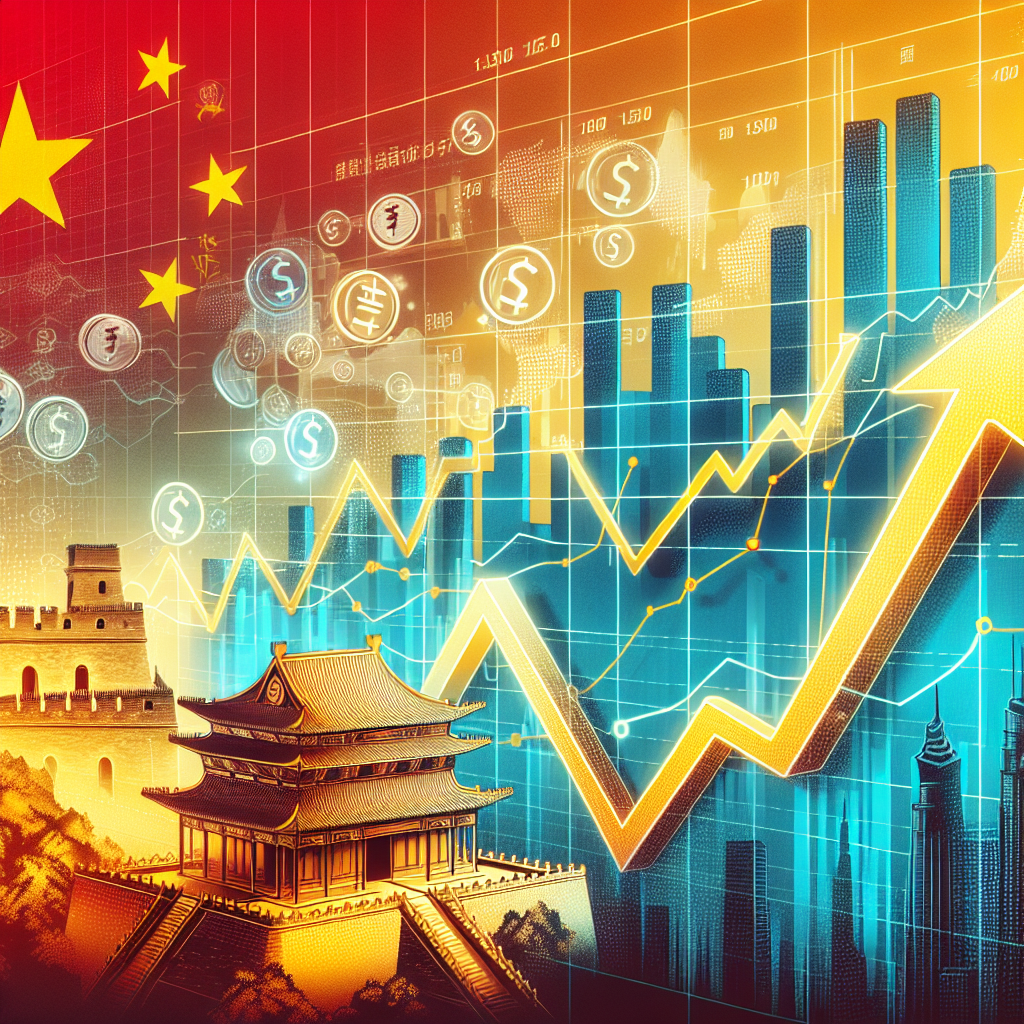
In November 2024, the Politburo of China made a significant policy shift aimed at revitalizing the country’s economy, responding to challenges like sluggish growth, deflation concerns, and increasing global economic pressures. This change has sparked a dramatic surge in both stocks and bonds, signaling a major shift in China’s economic strategy. The market reactions were immediate, with notable rises in key indices on the Shanghai and Shenzhen Stock Exchanges and increased demand for government bonds. This article delves into the policy shift, its immediate market impact, and the potential long-term effects on China and the global economy.
The Role of the Politburo and Its Recent Shift
The Politburo, the central decision-making body of the Communist Party of China (CPC), oversees major policy directions, including economic reforms. Comprised of senior leaders within the Party, it plays a crucial role in shaping national policy and strategic directions. Recent discussions within the Politburo have focused on tackling economic stagnation, rising unemployment, and concerns about deflation. The shift in policy represents a proactive response to these issues, prioritizing fiscal stimulus, structural reforms, and continued support for innovation-driven sectors.
Key aspects of the shift include:
- Increased infrastructure spending.
- Easing fiscal policies aimed at stimulating both domestic consumption and investment.
- Boosting support for critical sectors such as technology, renewable energy, and manufacturing.
Market Reactions to the Policy Shift
The markets reacted enthusiastically to the announcement of the policy changes. The immediate uptick in both the stock and bond markets is indicative of investor confidence in the Chinese government’s new economic measures.
Surge in Stock Markets
Following the policy shift, the Shanghai and Shenzhen stock markets saw notable gains. Sectors directly benefiting from the new policies experienced the sharpest increases.
-
Technology Sector: Chinese technology stocks, particularly in areas like semiconductors, artificial intelligence (AI), and green technology, surged. This was driven by the government’s push for greater technological innovation and self-reliance. Investments in emerging technologies like AI and 5G have been prioritized, signaling potential growth for domestic firms in these sectors.
-
Infrastructure and Real Estate: The construction and real estate sectors also saw strong growth due to the government’s plans to boost infrastructure spending. This policy is aimed at revitalizing the economy by creating jobs and stimulating demand for construction materials and housing.
-
Renewable Energy: China’s continued push for green energy also boosted stocks in the renewable energy sector. With the government’s ongoing focus on reducing carbon emissions and investing in solar, wind, and electric vehicles, companies in the renewable energy space are likely to see sustained growth.
Surge in Bond Markets
In addition to the stock market rally, China’s bond markets also experienced a surge. Chinese government bonds, as well as corporate bonds from state-owned enterprises (SOEs), saw increased demand from both domestic and international investors.
The central bank’s accommodative stance, which includes maintaining low interest rates, has made government bonds an attractive investment. This surge in bond prices reflects a renewed confidence in China’s economic stability and future prospects. Investors are particularly drawn to the relatively low yields compared to other major economies, especially as they anticipate ongoing fiscal stimulus.
Policy Changes and Economic Reforms
The main focus of China’s policy shift has been on ensuring stable economic growth and addressing the ongoing challenges of deflation and sluggish consumer demand. The new measures reflect the government’s effort to stimulate the economy through both fiscal and monetary means, while simultaneously implementing structural reforms for long-term stability.
Fiscal Stimulus and Infrastructure Investment
The government has committed to increasing its infrastructure spending, particularly in sectors such as transportation, green energy, and digital infrastructure. These investments aim to create jobs and stimulate demand in key industries. The focus is on large-scale infrastructure projects, including high-speed rail, airports, and urban redevelopment, which are expected to benefit construction and materials companies.
This fiscal stimulus package is designed to lift consumer demand by reducing taxes for businesses and individuals. The goal is to increase disposable income and encourage spending, particularly among China’s middle class. By doing so, the government hopes to drive economic growth from within, reducing dependence on exports.
Monetary Easing and Support for Key Sectors
Alongside fiscal stimulus, the People’s Bank of China (PBOC) is expected to continue its accommodative monetary policy. This includes keeping interest rates low to encourage borrowing and investment, especially in small businesses and high-tech industries. Lower borrowing costs are designed to encourage investment in new technologies, which in turn can fuel growth in sectors like AI, semiconductors, and green energy.
The government has also signaled increased support for key industries such as high-tech manufacturing, green technology, and renewable energy. This includes providing subsidies, reducing regulatory barriers, and promoting innovation through both state and private sector collaboration.
Implications for Foreign Investors
The policy shift has implications for foreign investors looking to capitalize on China’s evolving economic landscape. While China presents a wealth of opportunities, there are also inherent risks that investors must consider.
Growth in Technologically Innovative Sectors
Foreign investors are likely to find increased opportunities in China’s growing high-tech sectors. The government’s focus on innovation-driven growth, especially in AI, 5G, and renewable energy, has positioned China as a leader in global technology development. This emphasis on self-reliance is expected to fuel the growth of domestic companies in these fields, potentially making them attractive investment targets for global investors.
Moreover, China’s push for green energy development is attracting international attention. The global transition to renewable energy creates opportunities for foreign companies involved in solar, wind, and electric vehicle production to collaborate with Chinese companies or invest directly in Chinese green energy firms.
Bond Markets and Stability
The surge in Chinese bond markets is also appealing to foreign investors seeking stable returns. With government bonds yielding lower returns than some Western alternatives, they present an opportunity for conservative investors looking for lower-risk, long-term investments. The growth in SOE bonds is also attracting institutional investors who seek more predictable returns backed by government policies.
However, it is essential for foreign investors to consider the regulatory and geopolitical risks that come with investing in China. The Chinese market remains heavily influenced by government policies, and while these recent measures indicate stability, the evolving political landscape can create uncertainties. Additionally, China’s ongoing trade tensions with the United States and other countries might impact foreign investment inflows.
Long-Term Economic Strategy and Challenges
While the immediate policy shift has provided a boost to China’s stock and bond markets, the long-term success of these measures will depend on how well they address the underlying structural challenges facing the Chinese economy.
Structural Reforms and Market Liberalization
In the long term, the Chinese government is focused on structural reforms aimed at improving the efficiency of state-owned enterprises (SOEs) and fostering a more market-driven economy. These reforms include reducing the over-leverage in SOEs, improving corporate governance, and encouraging private sector innovation.
There are also ongoing efforts to further liberalize China’s financial markets, making them more attractive to foreign investors. This includes efforts to open up the bond market and reduce restrictions on foreign ownership in certain sectors.
While these reforms are expected to yield positive results, they also come with risks. The challenge will be in striking a balance between maintaining control over key sectors and allowing for greater market forces to operate freely.
The Challenge of an Aging Population
One of the major long-term challenges for China’s economy is its aging population. The government is expected to continue prioritizing policies aimed at addressing this demographic shift, such as expanding social services and encouraging higher birth rates. These policies will be crucial in ensuring that China maintains a healthy labor force and continues to foster economic growth.
Global Geopolitical Risks
While China’s economic reforms and stimulus measures have spurred market optimism, global geopolitical risks remain a significant concern. Trade tensions, particularly with the United States, continue to threaten the stability of China’s export-driven industries. Additionally, uncertainties in the global economy, such as inflationary pressures and supply chain disruptions, could undermine the effectiveness of China’s domestic policies.
The Politburo’s recent policy shift marks a pivotal moment for China’s economic future. By focusing on fiscal stimulus, infrastructure investment, and support for key sectors, the government has set the stage for renewed economic growth. The immediate surge in stock and bond markets is an indication of investor confidence, but it is still uncertain how sustainable these gains will be in the long term.
Visit our other website: https://synergypublish.com


